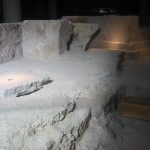The name of Llíria has been valued as an example of solidarity in one of the most important international congresses, the III UNESCO Creative Cities Meeting held in Beijing this week. In her inaugural speech, the Director General of UNESCO, Audrey Azoulay, recognized the effort of solidarity of the city at the beginning of the pandemic: “We have seen the resilience and solidarity of our network in action, for example in Llíria (Spain), UNESCO Creative City of Music, which invited its professional and amateur musicians to offer a concert from their balconies”.
The Director-General refers to the action “Windows of Music and Hope”, held on March 26, at one of the worst moments of the health crisis. Then the musicians from Edeta went out onto the balconies to play Beethoven’s Ninth Symphony, achieving the adhesion to it of many Valencian and international cities. The action, promoted from the official channels of # LlíriaCityofMusic, had a great impact, and UNESCO itself has already highlighted it as an example on its official website.
Up to now, it has once again been praised before the world, in the presence of the highest Chinese authorities and representatives of the main international cities that are part of the Network on the five continents. The Director-General of UNESCO added that “many Creative Cities have been inspired by this example to launch their initiatives”. Azoulay also named cities such as Wuhan (China), Chennay (India) or Katowize (Poland) in her speech. The opening act of this event, including the complete speech of the general director, can be seen here: http://www.shejiyun.net/en/








